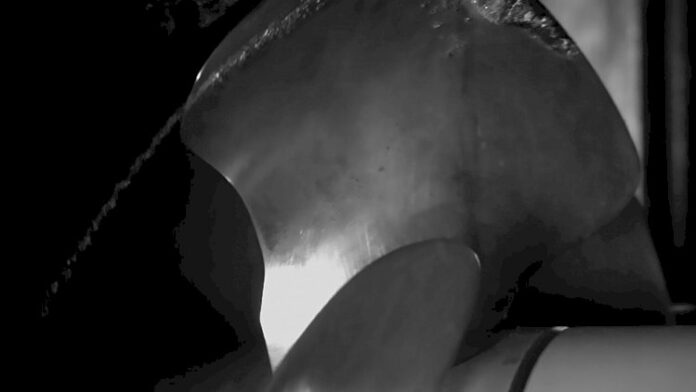While the naval sector has been using KONGSBERG Blade Air Emission technology for a number of years, with several navies deploying it to limit vessel signature, the process is now being applied to commercial ship propellers to reduce the effect of underwater radiated noise on marine life. By machining a channel into the leading edge of the propeller blades, the Blade Air Emissions concept significantly reduces cavitation-induced noise and erosion risk.
The Blade Air Emission concept, applicable to conventional fixed pitched and controllable pitched propellers, applies the results of extensive research undertaken at the KONGSBERG Hydrodynamic Research Centre (KHRC) in Kristinehamn, Sweden, to offer a more silent propeller to the commercial marine market.
Robert Gustafsson, Senior Hydrodynamicist of KHRC commented:
“Propellers optimised with the Blade Air Emission system have for some time been used on naval vessels to reduce and distort vessel signature. Following the success of the system we can now roll out the concept to the wider shipping industry as a way to reduce propeller noise and erosion risk.”
KHRC Propellers accept cavitation to optimise vessel performance and efficiency, but by carefully balancing the amount of air circulated around the blades, Kongsberg Maritime can optimise the negative effects of cavitation without adversely affecting ship efficiency.
According to Gustafsson there is an equilibrium:
“With too much air, the underwater radiated noise increases, and propeller efficiency reduces. There is a sweet spot. We can optimise the propeller using this concept to achieve the optimum noise reduction without affecting propulsion performance.”
Göran Grunditz, Manager, KHRC, said:
“We see huge benefits in the commercial world for the Blade Air Emission technology. While there are financial advantages in reducing the cost of repairing or replacing propeller blades damaged by cavitation erosion, the concept minimises substantially the underwater radiated noise from a ship’s propeller, which in some cases can be 180dB. This is a major environmental problem and is already being considered at a regulatory level. It affects the migratory, reproduction and feeding patterns of marine life, such as dolphins, whales and other species. It also causes high levels of stress for marine life.”



